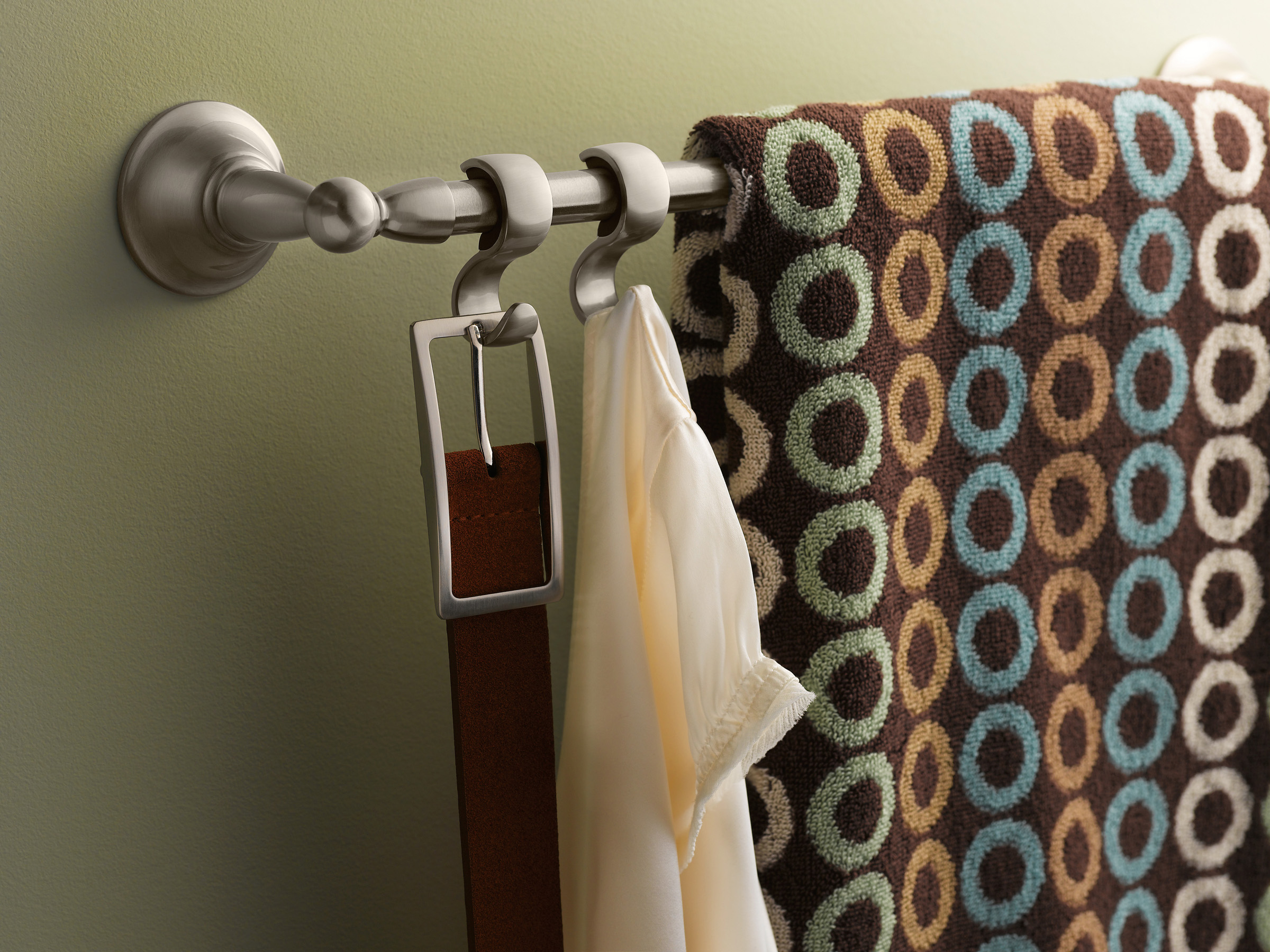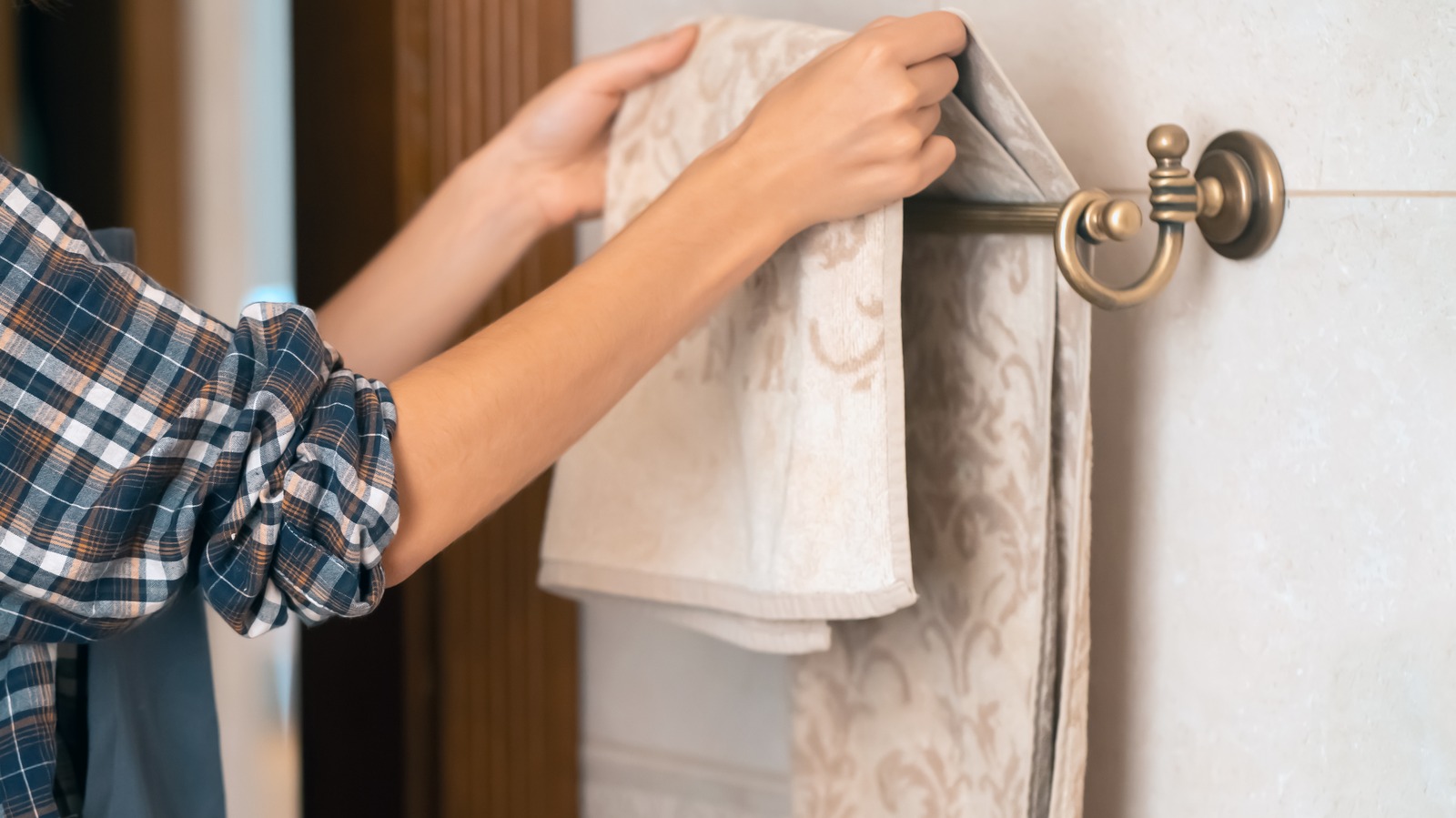Types of Hooks and Towel Bars

Hooks and towel bars are essential bathroom fixtures that provide both functionality and style. They offer a convenient way to hang towels, robes, and other bathroom essentials, while also adding a decorative touch to the space. Choosing the right type of hook or towel bar depends on your individual needs, style preferences, and bathroom layout.
Materials Used for Hooks and Towel Bars
The material of a hook or towel bar plays a significant role in its durability, appearance, and overall aesthetic. Common materials include:
- Stainless Steel: A popular choice for its durability, corrosion resistance, and modern look. Stainless steel is also easy to clean and maintain.
- Brass: Offers a classic and elegant appeal, often with a warm, golden finish. Brass is durable and can be polished to maintain its shine.
- Chrome: Known for its sleek, shiny finish and resistance to tarnishing. Chrome is a versatile option that complements a variety of bathroom styles.
- Plastic: An affordable and lightweight option, often available in a variety of colors. While plastic hooks and towel bars may not be as durable as metal options, they can be a practical choice for budget-conscious homeowners.
Styles of Hooks and Towel Bars
Hooks and towel bars are available in a wide range of styles to complement different bathroom aesthetics. Some common styles include:
- Modern: Characterized by clean lines, minimalist designs, and sleek finishes. Modern hooks and towel bars often feature geometric shapes and bold colors.
- Traditional: Features classic designs with ornate details, such as scrollwork and floral motifs. Traditional hooks and towel bars are typically made from brass or chrome and have a polished finish.
- Farmhouse: Emphasizes rustic charm and natural materials. Farmhouse hooks and towel bars often feature distressed wood, metal accents, and a warm, inviting aesthetic.
- Industrial: Inspired by industrial spaces, industrial hooks and towel bars feature exposed metal, rough textures, and a minimalist design. They often incorporate elements like pipes, gears, and reclaimed wood.
Single-Arm vs. Double-Arm Towel Bars
Towel bars come in single-arm and double-arm versions, offering different functionalities:
- Single-Arm Towel Bars: Ideal for smaller bathrooms or areas with limited space. They are typically used to hang one or two towels.
- Double-Arm Towel Bars: Provide more hanging space, allowing you to hang multiple towels or even bathrobes. They are suitable for larger bathrooms or areas with a high volume of towel usage.
Functionality of Robe Hooks, Towel Rings, and Towel Bars
Each type of bathroom fixture serves a specific purpose:
- Robe Hooks: Designed for hanging bathrobes, towels, or other items. They are typically made from metal and are available in various styles.
- Towel Rings: Used to hang hand towels or washcloths. They offer a more decorative and space-saving option compared to towel bars.
- Towel Bars: Provide a horizontal surface for hanging bath towels, hand towels, or washcloths. They are available in various lengths and styles to accommodate different needs.
Installation and Mounting Options

Installing hooks and towel bars in your bathroom requires choosing the right mounting method to ensure a secure and long-lasting installation. Several options are available, each with its own advantages and considerations.
The most common installation methods for hooks and towel bars involve drilling, adhesive mounting, and using existing hardware.
Drilling Installation
Drilling is the most secure method for installing hooks and towel bars, especially for heavier items. This method requires drilling holes into the wall and using screws to secure the hardware.
Drilling is recommended for:
- Heavy towel bars and hooks
- Walls made of drywall, plaster, or concrete
- Locations where high stability is required
Choosing the right drill bit and screw size is crucial for a secure installation. The drill bit should be slightly smaller than the screw diameter, allowing for easy insertion. The screw length should be sufficient to penetrate the wall material and provide adequate support.
Here are some tips for drilling installation:
- Mark the desired location for the hook or towel bar using a pencil.
- Use a level to ensure the marked location is straight and level.
- Drill pilot holes at the marked locations using a drill bit slightly smaller than the screw diameter.
- Insert the screws into the pilot holes and tighten them securely.
- Ensure the hardware is level and secure before hanging any items.
Adhesive Mounting
Adhesive mounting is a convenient option for lighter hooks and towel bars, especially for walls that cannot be drilled. This method uses strong adhesives to attach the hardware to the wall surface.
Adhesive mounting is suitable for:
- Light-duty hooks and towel bars
- Walls made of tile, glass, or other non-porous surfaces
- Locations where drilling is not feasible
Choosing the right adhesive is crucial for a secure installation. The adhesive should be strong enough to support the weight of the hardware and the items being hung.
Here are some tips for adhesive mounting:
- Clean the wall surface thoroughly with a mild detergent and allow it to dry completely.
- Apply the adhesive according to the manufacturer’s instructions.
- Press the hardware firmly against the wall and hold it in place for the recommended time.
- Allow the adhesive to cure completely before hanging any items.
Using Existing Hardware
If your bathroom already has pre-installed holes or brackets, you can use them to install hooks and towel bars. This method is the easiest and quickest option, but it may not be suitable for all types of hardware.
Using existing hardware is suitable for:
- Replacing existing hooks or towel bars
- Using hooks or towel bars that are compatible with the existing hardware
Here are some tips for using existing hardware:
- Check the existing hardware for stability and rust.
- Ensure the new hardware is compatible with the existing holes or brackets.
- Use appropriate screws and fasteners to secure the new hardware.
Design Considerations: Hooks Or Towel Bar In Bathroom

Hooks and towel bars are more than just functional fixtures in a bathroom. They can significantly contribute to the overall aesthetic and organization of the space. Selecting the right styles and materials can elevate the bathroom’s design, creating a cohesive and harmonious environment.
Integrating Hooks and Towel Bars into Different Bathroom Styles, Hooks or towel bar in bathroom
The choice of hooks and towel bars should complement the bathroom’s existing design aesthetic.
- Minimalist Bathrooms: Sleek, minimalist hooks and towel bars with clean lines and simple shapes, often made from polished chrome or brushed nickel, are ideal. These fixtures blend seamlessly into the minimalist design, emphasizing simplicity and functionality.
- Eclectic Bathrooms: Eclectic bathrooms offer a canvas for unique and expressive design choices. Hooks and towel bars in various materials, colors, and shapes can be incorporated to add personality and visual interest. For instance, vintage-inspired hooks made from wood or metal with intricate details can complement an eclectic bathroom’s character.
- Luxurious Bathrooms: In luxurious bathrooms, premium materials and intricate designs are paramount. Towel bars and hooks crafted from high-quality materials like polished brass, brushed gold, or even crystal can enhance the bathroom’s opulent ambiance. Consider decorative hooks with elegant details or towel bars with ornate finishes.
Using Hooks and Towel Bars to Create a Sense of Order
Hooks and towel bars are essential for creating a sense of order and organization in the bathroom.
- Strategic Placement: Placing hooks and towel bars strategically can optimize storage and enhance the bathroom’s functionality. For example, hooks near the shower or bathtub can hold bathrobes and towels, while towel bars near the sink can accommodate hand towels.
- Grouping Similar Items: Grouping similar items on hooks and towel bars can create a visually appealing and organized space. For example, grouping bath towels on one towel bar and hand towels on another can promote a sense of order and ease of access.
- Utilizing Wall Space: Hooks and towel bars can efficiently utilize wall space, minimizing clutter and maximizing storage potential. By strategically placing these fixtures, you can create a more organized and functional bathroom.
Designing a Bathroom Layout
- Entrance Area: A single towel bar near the entrance can hold hand towels for guests. Hooks can be strategically placed on the wall for hanging robes or bags.
- Shower/Bathtub Area: Hooks near the shower or bathtub are essential for hanging towels, bathrobes, and washcloths. A towel bar can be installed above the bathtub for larger towels.
- Sink Area: A towel bar or hooks near the sink can be used for hand towels, while a larger towel bar can be installed above the sink for bath towels.
